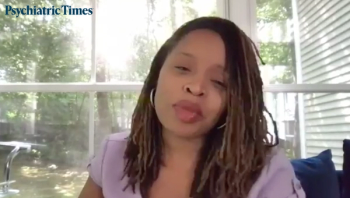
Overview of Bipolar 1 Disorder and Bipolar 2 Disorder
Drs Vladimir Maletic and Andrew Cutler provide an overview of symptom differences between bipolar 1 disorder (B1D) and bipolar 2 disorder (B2D).
Episodes in this series

Vladimir Maletic, MD, MS: Hello, welcome to this Psychiatric Times presentation titled, “Advances in the Clinical Management of Bipolar I Disorder.” I’m Dr Vladimir Maletic, a clinical professor of Psychiatry and Behavioral Sciences at the South Carolina School of Medicine in Greenville, South Carolina. It is my pleasure to be joined today by Dr Andrew Cutler, who is the chief medical officer at Neuroscience Education Institute in Carlsbad, California, and the clinical associate professor of psychiatry at Upstate Medical University in Syracuse, New York. Dr Cutler is a veritable encyclopedia of psychiatric knowledge and has been participant or investigator in trials of most of the medications used in treatment of bipolar disorder that are in usage today. Our discussion will focus on the practical considerations and clinical management of bipolar I disorder. So let us begin.
Andrew Cutler, MD: Thanks so much. It’s a pleasure to be here with you, as always.
Vladimir Maletic, MD, MS: Can you speak about bipolar I disorder and bipolar type II? Are there some distinctions that you believe are clinically relevant? What would you advise our colleagues in terms of making differentiation between these 2 subtypes of bipolar disorder?
Andrew Cutler, MD: It’s a great question and an important one, because they are distinct entities, although there’s no one pattern for any bipolar patient. Roughly, they are both conditions of recurrent depression. I always think of bipolar illness as an illness of recurrent depression, and what predominantly distinguishes the two is the type or the severity of the mania. Bipolar I has a full manic episode defined in DSM [American Psychiatric Association’s Diagnostic and Statistical Manual of Mental Disorders] as lasting at least a week of duration. It must result in some significant functional impairment and often hospitalization or jail, or something serious like that must be noticeable by others. It can include psychotic features whereas a bipolar type II has hypomania. The mistake that many of us make is thinking that hypomania, since that’s a milder form of mania, that bipolar II is bipolar junior, or a milder form of bipolar, and that’s not true. It’s amazing how the outcomes are even worse in some cases with bipolar II. Hypomania in the DSM is described as being at least 4 days of duration. I’m not sure exactly where that number came from. Sometimes it’s hard because a patient can’t really say to you, “Well, my hypomanic symptoms started less on Thursday.” It’s not usually that clear cut. And what happens if you have a patient with 3 days of hypomanic symptoms? The symptoms of hypomania are like those of mania, but to a slightly lesser degree, and does not result in significant functional impairment but must be a clear change from baseline noticeable by others and not associated with psychotic features. The depressions for both can be quite serious. They can be associated with psychotic features, suicidality, hospitalization, and so on.
Vladimir Maletic, MD, MS: It’s interesting that you pointed out recurrence of these conditions and emphasis on depressed mood because technically bipolar I can be defined only by presence of mania.
Andrew Cutler, MD: That’s a good point.
Vladimir Maletic, MD, MS: Only 1 manic episode.
Andrew Cutler, MD: That’s right.
Vladimir Maletic, MD, MS: I think what you’re suggesting is the common scenario, and depending on the study we read, individuals who only have mania are relatively scarce. It is anywhere in the studies between 2% to 10% of patients who have bipolar illness. The other point that you emphasize is recurrence because 90% of individuals who suffer from bipolar disorder will have recurrent episodes. These are really important factors.
Transcript edited for clarity
Newsletter
Receive trusted psychiatric news, expert analysis, and clinical insights — subscribe today to support your practice and your patients.


















